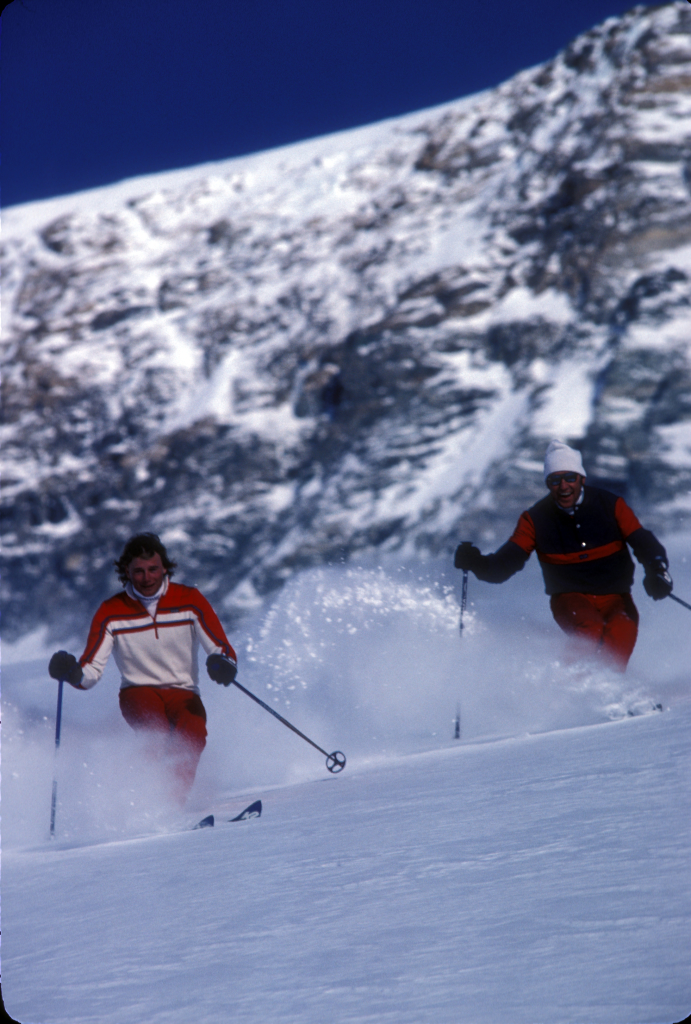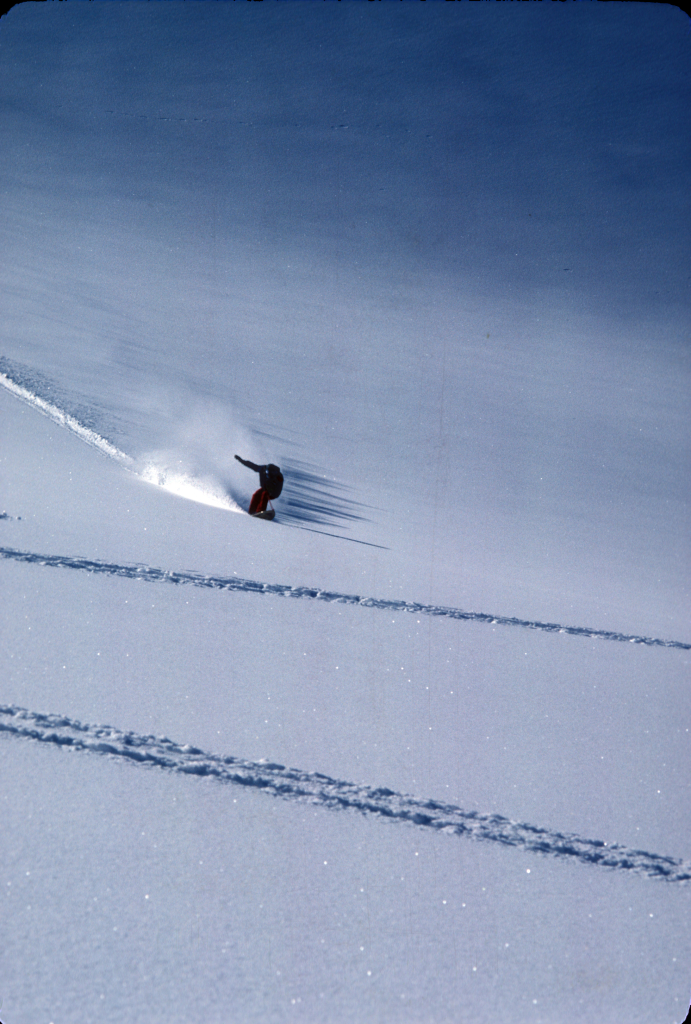IN 1981, BLAKE BARRYMORE WAS SURFING with his father near the family vacation home on the Baja peninsula of Mexico. That’s Dick Barrymore, of course, the late American ski filmmaker whose annual releases rivalled those of Warren Miller. Blake, meanwhile, was a young ripper who frequently skied for Dad’s camera.
Between waves they were brainstorming ideas for the upcoming season in which Dick had booked an extended stay at CMH Monashees. Such a dramatic setting would require one of the equally dramatic gimmicks for which Barrymore was famous. In 1979, for example, he shot footage of surfer Mike Doyle’s pioneering monoski, and captured for the first time a rider straightlining a powder field. But surfing turquoise walls in the Pacific gave Blake Barrymore another idea. “What if we get a surfboard up on one of those glaciers and ride it like a big wave at Waimea?” he asked. “Son,” Dick replied, “that is a fantastic idea.”

Blake, now in his fifties and still tearing it up in Sun Valley, vividly remembers fleshing out the segment. “I came up with the name Ted Shred,” he recalls. “In those days we called dumb people Teds, and shred was surf slang that was just becoming popular.
“At first, I figured that powder could be ridden on a big old surfboard, with a fin,” says Blake. “Then we learned that people were already experimenting with snow surfing, but on completely different boards.” Indeed, what grew into snowboarding began with a sort of parallel evolution, featuring independent tinkerers like Winterstick in Salt Lake City, Sims in California and Vermont’s Jake Burton. With exactly zero experience on any of them, Blake gathered a handful of prototypes and headed for CMH.
“Well, they all sucked,” says Blake of his initial attempts to surf on snow near Invermere, near the Bugaboos. “They had these crazy rubber straps, and crappy edges. They were super hard to control.”

And just as Ted Shred was about to give up, Dick pointed to the last board in the collection and asked, “What about that little one? Have you tried it?” It was the prototype of what would later be dubbed the Burton Backhill, barely 100 cm long, with two steel fins and a rope coming up from the tip for control.
Though far from the gun he envisioned, Blake grudgingly gave it a try. “I stepped in wearing a pair of old Sorel snowboots, and I just took off. It was actually controllable.” So began the world’s first big mountain snowboard shoot. As Barrymore senior later reminisced, “Blake never had a bad turn on that thing.”
You can judge for yourself, since the four-minute sequence thatmade the final cut of 1983’s Canadian Mountain Odyssey—and still gets tons of views on YouTube—contained virtually every run that Ted Shred made on his $40 Burton. Not that turning was the order of the day. Ted quickly graduated to straightlining on the wide-open Monashee glaciers, and there are several shots of him rocketing through groups of skiers, causing them to be “streaked by the Shred Baron,” as the cheesy voiceover puts it. (Thus, not only was CMH Monashees the cradle of big-mountain snowboarding, it also represented the first instance of a skier-snowboarder rivalry that continues to this day.)
In one terrifying run, Blake recalls, “I hit a rollover and started picking up massive speed. We later did some calculations and we figured I was going 86 miles per hour (nearly 150 kph). You can see in the film—it’s not a rooster tail, it’s a goddamn vapour trail.”
Ironically, Blake Barrymore never snowboarded again. Skiing is simply too deep in the family’s genes; his son, Wing Tai, is one of America’s top Olympic prospects in skiing halfpipe. “But if somebody got me a replica of that board and another heli ride into the Monashees, I’d do it again in a heartbeat. It would be a dream come true.”